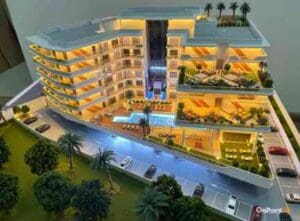Construction of Architectural Model in Dubai
In order to design buildings that are both useful and aesthetically pleasing, architects use their artistic skills. The architectural model in dubai, a three-dimensional depiction of a building or area, is a crucial component of the design process. An architectural model is a useful tool for illustrating and discussing design concepts with clients, engineers, and other interested parties.
Sizes of architectural models range from those constructed by hand to those manufactured by computers. Each model has its own set of pros and cons, and the designer must weigh those against their own requirements to arrive at a decision.
In this blog, we’ll examine the steps involved in making a scale model of a building, from brainstorming to construction.
Idea for a Design The first thing you should do while making a scale model of a building is think of a concept for the structure. This idea serves as the basis for the model and should reflect the overarching aims of the project. Designers often use physical models, but sketches and 3D computer models are also viable options. After the designer has settled on a concept, they can start to consider how that concept will be materialized.
Scale Finding out how big or little the model will be is the next stage. The scale is the ratio between the model and the actual structure. Depending on the magnitude and intricacy of the project, architects may employ a scale of 1:50, 1:100, or 1:200. The size and level of detail of the model are both affected by the scale.
Materials Once the designer has decided on the scale, they can start picking out the model’s materials. Materials are selected in accordance with the sort of model being constructed, the level of detail needed, and the available budget. Cardboard, foam board, balsa wood, and plastic are often used materials for architectural models. Materials including resin, metal, and glass are used in the construction of more expensive models.
Tools The designer also needs a wide range of equipment to construct the prototype. A ruler, sharp knife, glue, and tape are all examples of essential equipment. A CNC machine, 3D printer, or laser cutter are examples of more sophisticated equipment. The materials and level of precision dictate the tools employed.
Construction of the architectural Model Once the designer has decided on the materials and methods, the model can be constructed. Depending on the complexity of the design and the level of detail required, the time needed to construct a model might range from a few hours to several weeks. An example procedure for creating a model of a building is outlined below.
First, you’ll want to establish a foundation for your model. This can be created from foam board, cardboard, or any other durable material. If you want to add landscaping and more elements to your model, make sure the foundation is bigger than the model.
Second, the designer uses a sharp knife to carve out the necessary shapes from the chosen material for the model. Anything from the ground to the ceiling is fair game.
Third, put it all together: Once all the parts have been cut out, they are glued into place to form the model’s skeleton.
Fourth, finish the design by putting in finishing touches like windows, doors, and landscaping after the foundation has been laid. The structure’s finishing touches might be cut from the same material or applied afterwards.
Painting and varnishing the model is the last stage before shipping it out. The walls can be painted, and the grass can be textured, as part of this process.
CAD Models, or Computer-Aided Design Models While physical models are still commonly utilized, more and more architects and designers are instead using CAD models. As the design process progresses, CAD models can be easily modified to reflect any new insights or adjustments that have been made. A computer-aided design (CAD) model is created in a manner analogous to that of a physical model, but with the aid of specialist software.
First, make a computerized model by: The first stage in making a CAD model is to develop a digital representation of the building. AutoCAD and Revit are two examples of programs that can help with this.
Once the framework is complete, the designer can focus on finishing touches like doors, windows, and landscaping. The software’s features and tools are used to craft these specifics.
Third, the designer can add textures and materials to the model to provide a more lifelike picture of the structure. The model can then be rendered to create high-quality images and animations.
Using Architectural Models: Pros and Cons
There are many benefits to using architectural models instead of other design tools like sketches or 2D drawings. The designers can see how the pieces fit together and how the finished room will look and feel thanks to the 3D visualization. Models are also helpful for communicating with clients, engineers, and other stakeholders since they provide a physical representation of the design.
There are, however, drawbacks to using architectural models. They can be time-consuming and expensive to design, especially for large or complicated structures. Models also need actual room to be stored, which can be an issue for solo designers or businesses with limited space.
Conclusion Models are an indispensable resource for architects and designers because they allow for the tangible and realistic communication of design ideas. It takes careful planning, attention to detail, and a wide variety of materials and techniques to create an architectural model, whether you’re building a physical model or making a CAD model. Building a model can be costly and time-consuming, but it’s worth it because it adds depth and realism to the design process that other tools can’t match.
Instagram: https://www.instagram.com/onpoint.3d/
Facebook: https://www.facebook.com/onpoint3d.ae
Twitter: https://twitter.com/3dOnpoint
Pinterest: https://www.pinterest.com/onpoint3ddubai
LinkedIn: https://www.linkedin.com/company/onpoint3d

